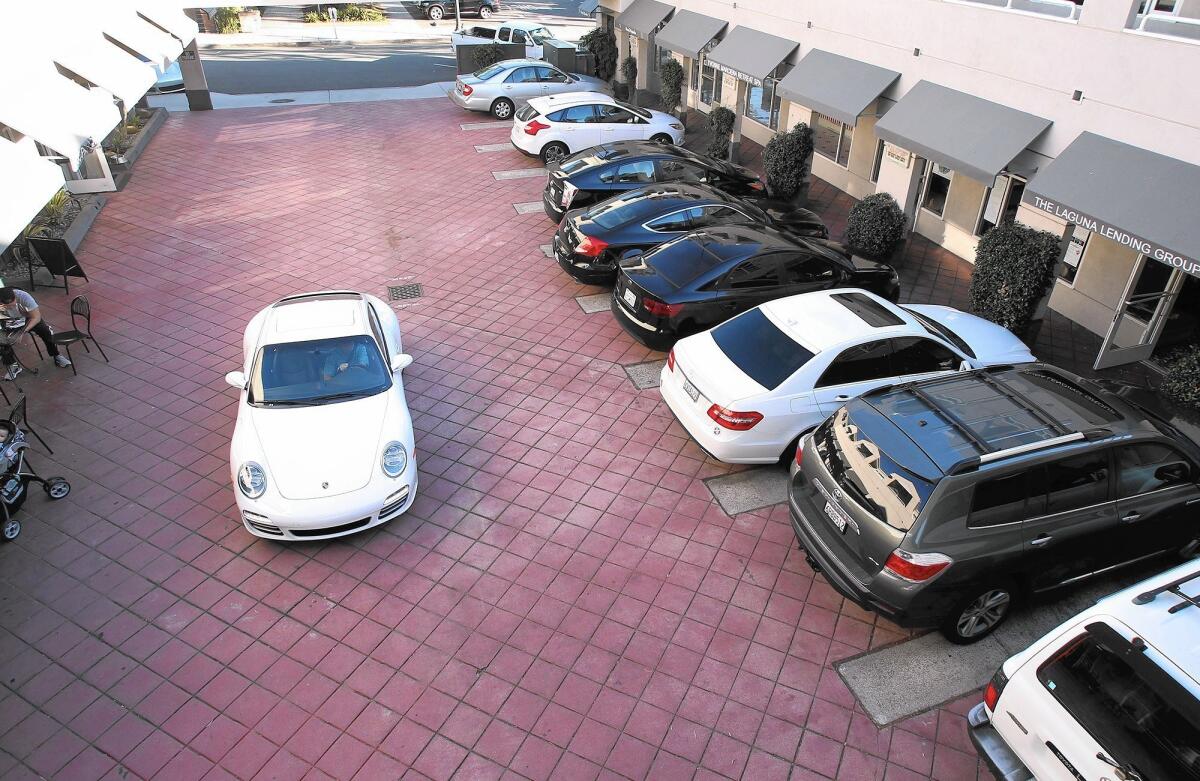Laguna Beach struggles with parking problems

- Share via
Parking is usually a pain in any beach town. But the problems are compounded in Laguna Beach, where the city has stiff parking space requirements for businesses.
But from pain often comes change. And it seems that the experience of the owners of Shirley’s Bagels may just make the city take a hard look at its parking demands.
For months, the bagel shop had tried to move a few doors down from its spot on the Broadway Street Plaza to larger quarters, only to run up against the complicated parking rules. Then the city suddenly, after more than 20 years, labeled Shirley’s Bagels as a food-service business rather than a retail outlet. That meant the shop had to provide more parking spaces — or prove that its customers could reasonably expect to find one of the 33 parking spaces already available at the plaza.
With 20 other tenants also needing to provide parking for customers, some research and creativity was needed. Shirley’s paid a consultant to determine each business’ hours of operation and how many parking spaces each required. The consultant determined that because the shops were open at different hours, the 33 parking spaces would suffice.
Finally last month, the city planning commission unanimously granted Shirley’s request to move. City Commissioner Norm Grossman said the months-long wait the bagel shop endured was not only unfair, but revealed glaring problems with the parking codes that need to be addressed.
How many spaces any shop will use at any given time is unpredictable. Grossman said the number of required parking spaces is misleading because people often park in one spot and visit several retailers.
Laguna’s process is made even more complex when in-lieu fees are added to the mix.
City code allows a property owner to pay a fee of $20,000 in lieu of providing a physical parking spot. The owner is given a certificate that the city credits as a parking space and adds to the business’ required parking space count.
The Broadway Plaza has 26 in-lieu certificates, according to a staff report. Added to that are 21 grandfathered spaces granted to the building before current parking rules went into effect.
“We’re moving around mythical spaces,” Grossman said. “It makes no sense.”
He said required parking spaces should be based solely on square footage.
Santa Barbara, another beach town wrestling with its parking supply, has created a parking district in which businesses adhere to a ratio of one parking space for every 500 square feet, no matter the use, City Planner Danny Kato said.
An increase in the number of public parking lots has also helped ease congestion. In the mid-1980s, business owners agreed to pay a certain percentage into a parking fund to make space for the lots.
Laguna Beach has explored the possibility of adding public lots and parking structures. Last summer, the city experimented with demand-based pricing and opened a lot at the Laguna College of Art + Design to catch visitors before they hit downtown. The lot proved a boon and was filled to capacity most Saturdays and two-thirds full Sunday afternoons, according to a city report.
Earlier this year Laguna hired MIG, an urban planning firm, to help update the city’s downtown development plan, a document that includes parking issues.
Rick Williams, a consultant based in Portland, Ore., hired by the city for his expertise in parking-related matters, said Laguna Beach is on the right path but said city leaders have “to decide whether they are responsible for providing parking and, if so, for which groups, be it residents, tourists or employees. They also need to ask what is the best use of public funds?”
Grossman said he wonders if it’s truly necessary for Laguna Beach to create more parking spaces.
“We have enough parking, it’s a management problem,” he said. “If we manage properly, and get the [off-season] trolleys to work, we may not have to go to the extreme of providing a parking structure.
“The frustrating thing with our parking code is its revision on top of revision. The code was written 20 to 30 years ago without going back and looking at the thinking behind it.”
Twitter: @AldertonBryce
More to Read
Get the Latinx Files newsletter
Stories that capture the multitudes within the American Latinx community.
You may occasionally receive promotional content from the Los Angeles Times.







